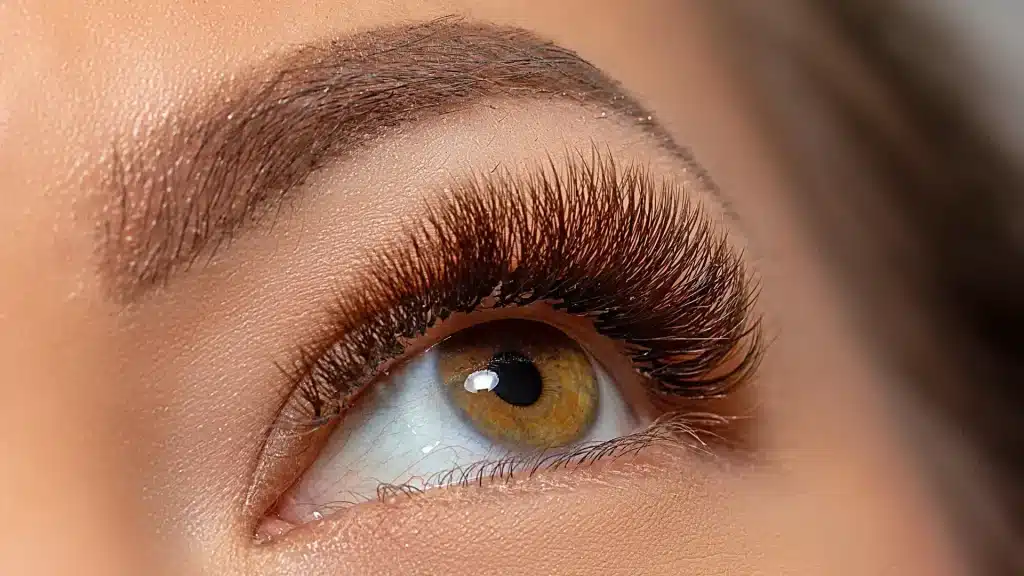CDC’s National Center for Health Statistics observed that the total estimated number of pregnancies in the United States declined by 9% over a decade. This decline underscores the importance of monitoring and understanding trends in reproductive health and the need for targeted interventions to support maternal and infant well-being.
Pregnant women frequently encounter aesthetic concerns, including sparse eyelashes. When seeking safe and effective lash solutions during pregnancy, they may consider using Latisse. However, pregnant individuals need to be aware of any precautions associated with this therapy, which involves applying the product to the upper region of the eyelashes.
This article will examine the safety of using Latisse during pregnancy, potential risks and safety concerns, and case studies.
Key Takeaways
- Latisse offers an aesthetic enhancement focusing on growing lashes, capitalizing on its active ingredient, 0.03% bimatoprost ophthalmic solution.
- Unfortunately, no specific research or clinical studies about Latisse and pregnancy, warranting caution due to its potential risks.
- It’s worth noting that Latisse has no approved use for pregnant individuals, highlighting its safety profile for this specific population as uncertain.
- Additionally, the manufacturer of Latisse advises caution when breastfeeding women consider using the product, as it may be excreted into breast milk.
About: Medical Spa RX provides medical practices with premium products at the best prices. If you’re looking to buy Latisse wholesale for your practice, the sales representatives at Medical Spa RX can give you guidance.
Introduction to Latisse

Latisse, which incorporates bimatoprost ophthalmic solution 0.03%, addresses hypotrichosis, the term for inadequate eyelashes. This formulation enhances eyelash growth by increasing length, thickness, and darkness.
FDA-approved for treating eyelash hypotrichosis, Latisse works by extending the anagen (growth) phase of the eyelash hair cycle. It offers an alternative to lash extensions and can be used off-label for sparse brows, providing a versatile aesthetic enhancement.
Safety of Using Latisse During Pregnancy
According to Latisse’s study data, 78% of individuals using Latisse experienced a noticeable improvement in overall eyelash appearance, including fullness, length, and darkness. However, evaluating the safety of using Latisse during pregnancy requires careful consideration of recent studies and medical advice, as it poses questions about possible complications and effects on fetal development.
Unfortunately, no specific research or clinical studies about Latisse and pregnancy, warranting caution due to its potential risks. It’s worth noting that Latisse has no approved use for pregnant individuals, highlighting its safety profile for this specific population as uncertain.
This solution has been tested in animal studies, which caused adverse effects; however, the manufacturer and FDA have not tested Latisse for its safety and efficacy for pregnant individuals. Due to the limitations of animal reproductive studies in predicting human outcomes, using Latisse 0.03% during pregnancy should be considered if the potential benefits outweigh the possible risks to the developing fetus.
Moreover, potential risks and safety concerns for Latisse and pregnancy treatment include systemic absorption, allergic reactions, and risk-benefit assessment. While the impact on fetal development remains unknown, avoiding Latisse during pregnancy as a precaution can ensure the safety of both mothers and developing fetuses.
Individuals should seek a thorough consultation and evaluation with a medical professional to ensure safety. Given the uncertainty and the lack of research on Latisse’s impact when used by pregnant women or nursing mothers, medical professionals advise weighing the benefits against possible safety concerns related to both fetal health and breastfeeding challenges.
Recommendations from Health Organizations

The US FDA has not assigned Latisse a specific pregnancy category or an approved indication for use. This absence indicates that medical professionals must weigh the potential benefits against the risks before recommending it to pregnant patients.
Since detailed studies on Latisse and pregnancy effects on fetal development are lacking, this decision-making process becomes crucially important. Medical professionals must stay informed about safety guidelines and exercise caution while discussing Latisse dosage and usage with expectant mothers considering using it for eyelash growth or other cosmetic concerns.
Meanwhile, specific recommendations from the American College of Obstetricians and Gynecologists (ACOG) may not be available online, but steering clear of Latisse during pregnancy is an essential safety support to avoid potential and unknown risks for the fetus.
These health organizations emphasize careful consideration before prescribing any treatment that could affect fetal development, including Latisse and other variants. They base their guidance on comprehensive research and clinical guidelines designed to protect both mother and child during pregnancy.
Expert Opinions and Case Studies

While specific case studies directly addressing Latisse and pregnancy are limited, insights from broader studies on medication safety during pregnancy contribute to practitioners’ and patient’s understanding. According to The Bump, they advise pregnant individuals to discontinue the use of Latisse during their pregnancy.
Additionally, the manufacturer of Latisse advises caution when breastfeeding women consider using the product, as it may be excreted into breast milk. This cautious approach of discontinuing and avoiding Latisse during pregnancy aligns with recommendations from leading health organizations and ensures patient safety remains paramount.
RealSelf may show numerous Latisse before and after eyelashes patient reviews, and Latisse’s research underscores its significant improvement. However, no relevant case studies highlight its safety and effectiveness in pregnant individuals.
Furthermore, medical professionals should also discuss the contraindications and potential side effects that may occur during treatment. Latisse has a contraindication of hypersensitivity, advising patients not to use the product to avoid allergic reactions. When these reported adverse reactions occur, patients should immediately seek medical attention. These include:
- Eye pruritus
- Conjunctival hyperemia
- Skin hyperpigmentation
- Ocular irritation
- Dry eye symptoms
- Periorbital erythema
Conclusion
Latisse, a topical solution containing bimatoprost, is commonly used to enhance eyelash growth. The decision to use Latisse during pregnancy requires careful consideration due to the lack of clinical studies and research regarding its safety and effectiveness. However, as a precaution, avoiding Latisse during pregnancy is generally recommended.
Pregnant women should consult healthcare professionals before using Latisse. Health organizations prioritize safety and advise against non-essential treatments during pregnancy and breastfeeding. Patients must remember that consulting licensed medical professionals can significantly help in ensuring the safety of them and their developing fetus.
FAQs
1. Is it safe to use Latisse during pregnancy?
According to current research and medical advice, the safety of using Latisse during pregnancy is uncertain. Latisse has not been approved for use by pregnant individuals, and there are potential risks to fetal development. It’s crucial to consult a medical professional for personalized guidance.
2. What are the potential risks of using Latisse during pregnancy?
The potential risks of using Latisse during pregnancy include systemic absorption, allergic reactions, and uncertainty about its effects on fetal development. Due to the lack of specific research on Latisse and pregnancy, caution is advised, and the decision to use Latisse during pregnancy should be based on a thorough risk-benefit assessment.
3. Are there recommendations from health organizations regarding Latisse use during pregnancy?
Health organizations like the US FDA and the American College of Obstetricians and Gynecologists (ACOG) emphasize the importance of careful consideration before using Latisse during pregnancy. Since detailed studies on Latisse and its effects on fetal development are lacking, caution and thorough evaluation are advised to ensure the safety of both mother and child.
References
- U.S. Pregnancy Rates Drop During Last Decade. (2024, March 4). Www.cdc.gov. https://www.cdc.gov/nchs/pressroom/nchs_press_releases/2023/20230412.htm#:~:text=Report%20Findings%20The%20total%20estimated%20number%20of%20pregnancies
- Study Data | LATISSE® Professional. (n.d.). Professional.latisse.com. Retrieved June 20, 2024, from https://professional.latisse.com/About-Latisse/Efficacy





















